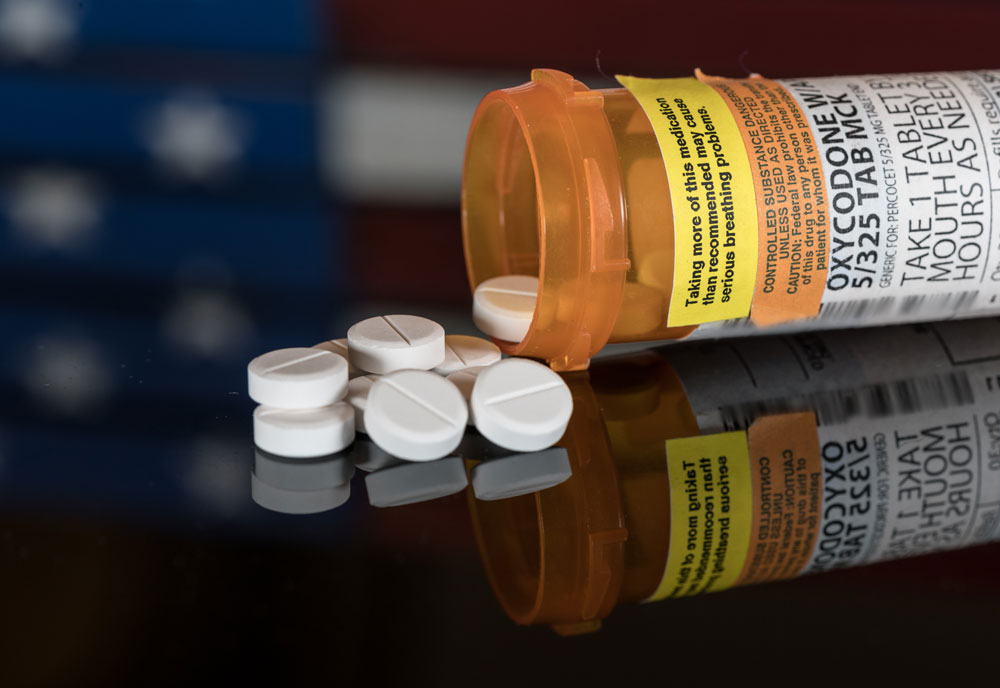Experiencing extreme stress and trauma is a far too common occurrence. Some people go through intensely stressful or traumatic events, whereas others see stress mount gradually over time, becoming untenable. It may be different for each person, but everyone has a breaking point and may be diagnosed with Post-Traumatic Stress Disorder, or PTSD. As of 2018, nearly 8% of adults in the United States have PTSD and a significant proportion of that percentage is made up of veterans. PTSD is nearly always a life-altering mental disorder with effects ranging from disruptions to daily life to depression and suicide. Because of the serious nature of PTSD, patients seek help through psychotherapy and medications. These methods have provided some relief, but many of the medications prescribed for PTSD alter brain chemistry and if certain neurotransmitters become too imbalanced, the results can be devastating. Fortunately, as more and more research is being done, more people who live with PTSD are turning to cannabis for relief from their symptoms.
DEFINING PTSD
PTSD is known today as a mental illness, but this was not always the case. It stands to reason people have suffered from PTSD since humans have been on the planet, even early recordings of soldiers struggling with the horrors of war are found in ancient Greek texts, but the first recorded instances of PTSD and attempts to treat it trace back to World War I. During WW I, PTSD was coined as ‘shell shock’. Veterans experiencing ‘shell shock’ suffered from tremors, shaking muscles, bouts of depression or anger, go blind or lose use of certain body parts as a result of the trauma, or even become completely catatonic. Some deemed these symptoms to be nothing more than men losing their nerve to fight for their country, but even those who did their best to treat the poor soldiers did not fully comprehend the power the mind has over the body. It took many more wars and a few more decades for psychologists to realize exactly what was going on when someone faces extreme situations, violence, or extended trauma.
In 1980, the American Psychological Association recognized PTSD as a diagnosable disorder and officially put it into the Diagnostic and Statistical Manual, also known as the DSM-V. PTSD is a mental health condition triggered by a terrifying event, through experiencing or witnessing it. What separates PTSD from other stress related disorders is once the mind is exposed to a certain amount of trauma, the mind becomes convinced this trauma is perpetual and makes adjustments to thought and behavior in order to cope. No matter how PTSD manifests itself the root of the symptoms is the mind’s desire to protect itself and survive this difficult situation. Some examples might be a veteran staying away from fireworks on New Year’s Eve due to the sound of explosions, or a veteran sleeping with a night light because of the fear of total darkness, or even someone getting needlessly angry or violent because their mind associates certain behaviors as threatening. People with PTSD may exhibit unsocial behaviors because their mind is convinced they need to do this to survive. Those living with PTSD often have intrusive memories, which can make them emotional and disrupt their life, they may avoid people or places which remind them of their trauma, develop or increase negative thoughts and moods, and even alter their reaction to their environment, potentially leading to self-destructive behavior. Because each individual has a unique perspective and interprets the stressful or traumatic events in their own way, there are a number of ways in which PTSD can manifest itself in someone’s behavior. The key to reducing the effects of PTSD on a patient’s life is finding the right treatment to meet the needs of that person.

TREATING PTSD
Like many mental health conditions, finding the right treatment for each person is not easy. While no two treatment plans are the same, doctors have discovered some medicines and methods they have found to be generally effective. Nearly every doctor will recommend some form of cognitive therapy. Patients with PTSD may be stuck in certain ways of thinking, cycles or patterns, which bring up their traumatic memories and disrupt their lives until they can recover. It is crucial to break these cycles of thinking and allow the patient to emotionally process what happened in order to move forward in life. Medications such as anti-depressants and anti-anxiolytics, including Zoloft and Paxil, are typically turned to when treating PTSD. These drugs alter brain chemistry to increase the amounts of chemicals in the brain that illicit joy and a sense of well-being. While users have found success with these drugs, there can be a trial and error period in order to find the right dose and altering brain chemistry can lead to disastrous outcomes. Furthermore, some users find the drugs habit forming and abuse them. For those looking to try something new, cannabis is proving to be an effective alternative.

“My name is Tom. I’m a retired Vietnam Veteran. I have suffered from my combat wounds and have had sleep disorders for over 40 years. It has taken me years to find relief and a product that would help me sleep. I have had problems with edible doses, and your packaging and the fact that you have cut them in doses is fantastic. I am able to take the same dosage every night of your Insomnia Chews and I can now say I sleep like I did when I was 20 years old. Great job.”
– TS, Oakland CA
CANNABIS CAN TREAT PTSD
Many recent studies have shown cannabis is not only an effective alternative to traditional PTSD medications, it is becoming a fundamental aspect of some patients’ treatment. PTSD patients often struggle with sleep due in part to the dreams they have about the traumatic event which caused the PTSD. Sleep is when the body gets a chance to rest and repair, while the mind gets to process emotions to better deal with them in waking life. One study found those with PTSD are becoming increasingly likely to use cannabis to help them sleep and cope with their symptoms. Scientists have also discovered patients with PTSD or stress often do not create enough endocannabinoids themselves, important moderators of bodily functions. By using cannabis to treat insomnia and other stress related symptoms, PTSD patients can find the proper balance of endocannabinoids for their body and find relief from their PTSD at the same time. Cannabis is effective at treating stress because of how it interacts with the human body. When the cannabinoids in cannabis connect with the receptors on cell membranes, one of their functions is to alert the cells to create less of the stress hormones, adrenaline and cortisol. Furthermore, the cannabinoids alert the cells to produce more stress-relieving hormones, including anandamide, an endocannabinoid that gets its name from the Sanskrit for ‘bliss.’
SENSI PRODUCTS TO THE RESCUE
Sensi has several products to help with stress, anxiety and insomnia, which are common symptoms associated with PTSD. To reduce stress and anxiety many users find success with Sensi Chew CBD Platinum, a non-psychoactive cannabis infused chocolate caramel that when taken sublingually goes to work in 15-20 minutes. If the convenience of a pill is preferred, Sensi Caps CBD Softgels work in the same way as the chews but can take up to 45 minutes for onset. Other Sensi options that include THC may be effective for pain and severe stress caused by PTSD. Sensi Chew Sativa, Indica, and Hybrid, which all contain 10mg of THC per dose, are powerful muscle and mind relaxers. THC is a psychoactive cannabinoid and caution should be used. Taking too much THC could heighten the negative effects of trauma and small micro-doses should be tested first and adjusted for each individual and their tolerance. For sleep, Sensi Chew Insomnia with THC + Melatonin helps with severe insomnia, and Sensi Chew Insomnia Plus CBD + Melatonin helps with more mild insomnia. Take under the tongue 15 minutes before bedtime for a restful night’s sleep.
REFERENCES
Bonn-Miller, Marcel O, et al. “Using Cannabis to Help You Sleep: Heightened Frequency of Medical Cannabis Use among Those with PTSD.” Drug and Alcohol Dependence, U.S. National Library of Medicine, 1 Mar. 2014, www.ncbi.nlm.nih.gov/pmc/articles/PMC3929256/.
Hill, Matthew N, et al. “Integrating Endocannabinoid Signaling and Cannabinoids into the Biology and Treatment of Posttraumatic Stress Disorder.” Neuropsychopharmacology : Official Publication of the American College of Neuropsychopharmacology, Nature Publishing Group, Jan. 2018, www.ncbi.nlm.nih.gov/pmc/articles/PMC5719095/.
“History of PTSD.” The Oaks at La Paloma Treatment Center, 6 Nov. 2018, theoakstreatment.com/blog/history-of-ptsd/.
“National Center for PTSD.” PTSD, 13 Sept. 2018, www.ptsd.va.gov/understand/common/common_adults.asp.
“Post-Traumatic Stress Disorder (PTSD).” Mayo Clinic, Mayo Foundation for Medical Education and Research, 6 July 2018, www.mayoclinic.org/diseases-conditions/post-traumatic-stress-disorder/diagnosis-treatment/drc-20355973.
“Post-Traumatic Stress Disorder (PTSD).” Mayo Clinic, Mayo Foundation for Medical Education and Research, 6 July 2018, www.mayoclinic.org/diseases-conditions/post-traumatic-stress-disorder/symptoms-causes/syc-20355967.








